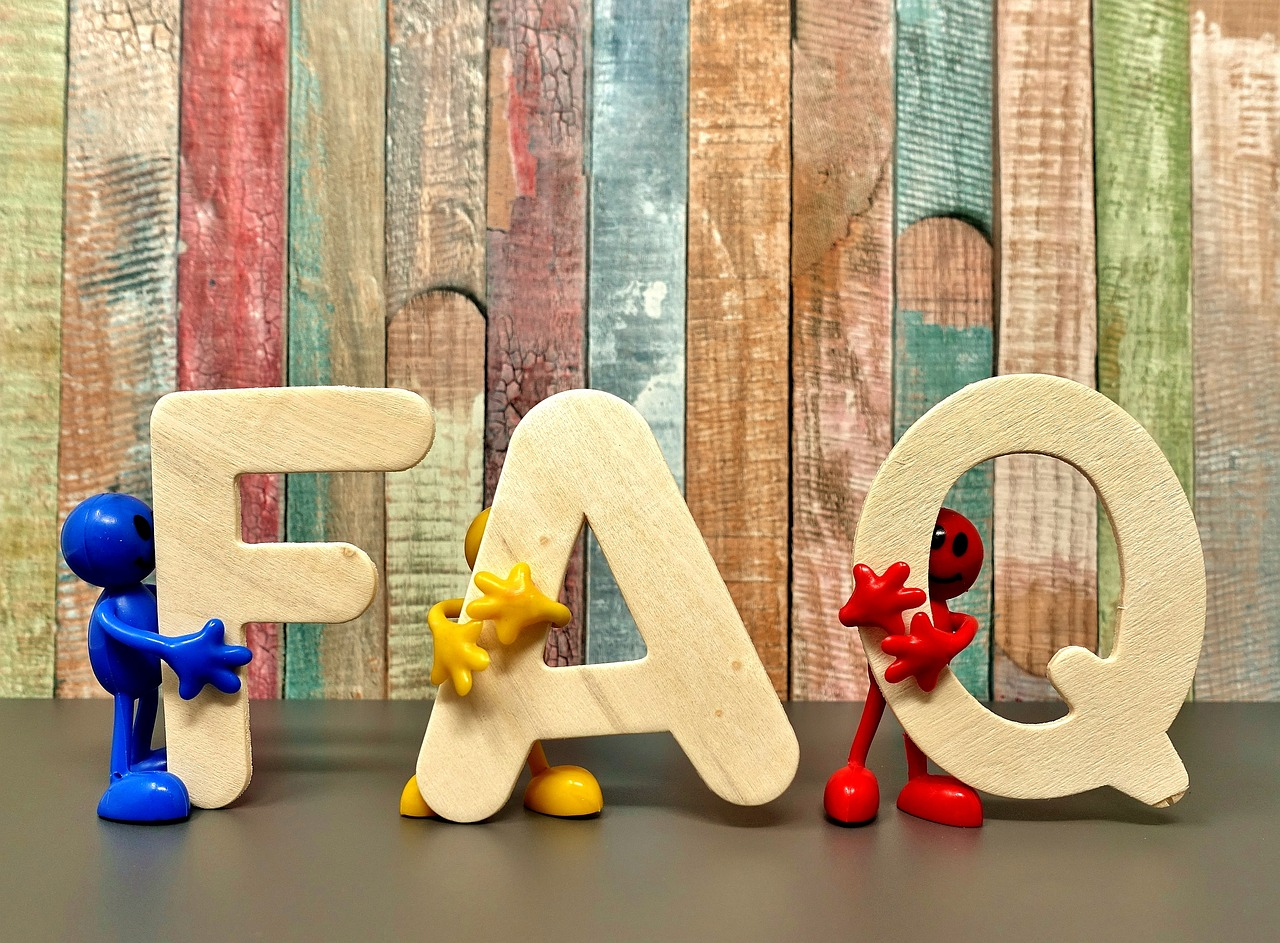
Exploring Google’s FAQ Rich Results Update
Last update: 7 September 2023 at 01:04 pm
Did you know that Google changes its search algorithm almost 500 to 600 times every year? The aim behind these continuous updates is relevance and accessibility.
With every tweak and innovation, Google transforms its search engine results from just blue links to rich snippets. In most cases, these snippets work as a gateway to knowledge and answers. And among these transformative updates, one star shines particularly bright: the FAQ Rich Results evolution.
Similar to many other algorithmic adjustments, FAQ Rich Results have moulded the Google search landscape for good. They, in fact, are redefining how mobile and desktop users traverse the vast terrain of the web.
If you, too, wish to unravel the nuances of this update, dive into this blog head first. Let us together delve into FAQ Rich Results’ evolution, dissect its mechanics, and explore its implications for content creators, marketers, and users alike.
Understanding FAQ Rich Results

What Are FAQ Rich Results?
When you type in a query into Google, sometimes you’ll notice a box underneath a Google search result with a list of frequently asked questions related to the topic. Those are FAQ Rich Results. They’re essentially a way for websites to highlight common questions (and answers) related to the content on that page.
Imagine you run an eCommerce site selling sneakers, and a common question is, “Do you have a return policy?”
Once the FAQ Rich Result is implemented, anytime someone searches for your website or related keywords, they might see this question (and its answer) right in the search engine results. Thus the ‘how to rich results’ will provide immediate clarity.
The Purpose of Search Results
- The primary advantage for users is immediate access to answers without having to click on the site. For high-priority queries, this can save precious seconds and provide mobile and desktop users with a seamless experience.
- For website owners, this format gives an opportunity to take up more real estate on the search engine results page, increasing the chances of a click-through.
- Displaying answers to common questions directly in search engine results positions a website as an authoritative resource in its field.
Evolution of FAQ Snippets
In the past, search engines showed basic links and meta descriptions in laptop and mobile versions. But, as the internet and user habits evolved, the demand for quick, detailed answers grew, too.
Initially, engines pulled rudimentary FAQs, often showing unrelated snippets. With FAQ page structured data introduction, Google improved the FAQ display using organised content presentation. Tools like Rich Results Test aided FAQ snippet refinement.
Also, recent updates further enhanced Google’s FAQ Rich Results, optimising appearance, site eligibility, and content quality.
The Recent Update: Key Changes

The digital marketing landscape is ever-changing. Google, being at the forefront of this revolution, frequently updates its algorithms and features to improve the user experience and adapts to new web standards. The recent update to the FAQ Rich Results is no exception. Let’s unpack the salient changes introduced and their implications below –
Specific Changes Introduced
- Improved Visual Clarity – Gone are the days of dense, confusing snippets which seemed confusing, especially on the mobile version. The new update brings a clearer, more distinct layout. Each FAQ now gets more breathing space, making it easier for users to spot and digest the information shown in the structured data rich results.
- Expansion and Collapsing Features – FAQs are now equipped with a clickable function. By default, a user might see one or two FAQs, but a small arrow icon indicates more questions underneath. With a simple tap or click, the list expands, revealing additional questions and answers.
- Better Integration with Featured Snippets – If a webpage’s content qualifies for both a featured snippet and FAQ-rich results, Google now displays them in a more cohesive manner. This synergistic display ensures users receive comprehensive insights right from the search engine results page.
- Automatic Detection of Quality Content – The update brings about smarter detection of genuine FAQs versus forced or irrelevant ones. Websites can no longer game the system by adding non-relevant FAQs; Google’s algorithms have become adept at distinguishing quality content.
Emphasis on Visual Presentation
Google and other search engines clearly recognize that a modern user doesn’t just need information; they need it presented aesthetically. The updated visual hierarchy makes it easier to skim through the FAQs. Borders, shadows, and distinct typography differentiate FAQs from other content, ensuring they catch the user’s eye.
Interactive Elements Amplified
Engagement is the name of the game. With the interactive expansion and collapse features in laptop and mobile versions, users now have control over the amount of information they wish to view. It’s a step towards a more dynamic and user-centric, search engine experience, allowing for a tailored approach to information consumption.
User Experience (UX) Enhancements

Beyond aesthetics and interactivity, the update is a leap forward in overall user experience:
- Loading Speeds – FAQ-rich results are now optimized for faster loading, ensuring that users on even slower connections can access information without delay.
- Mobile Optimisation – Recognizing the dominance of mobile searches, the FAQ display is tailored for smaller screens, ensuring clarity and ease of use.
- Relevance Over Quantity – When you prioritize quality content, your users will be less likely to encounter irrelevant FAQs, making their search journey smoother and more productive.
User Benefits and Intent Satisfaction
In the ever-evolving landscape of digital search, user engagement is paramount. Google’s recent update to the FAQ Rich Results aligns seamlessly with this philosophy, focusing on enhancing the user experience and satisfying user intent.
Let’s delve into the ways these changes benefit users and how to contribute to a more seamless online journey.
Enhanced User Engagement
The interactive nature of the updated FAQ-rich results immediately elevates user engagement. Users can now delve deeper into a topic without leaving the search engine results page.
The expansion and collapsing feature allows them to navigate through questions efficiently. This gives them a sense of control over their information-seeking process.
Alignment with User Intent
Understanding user intent is pivotal in delivering a satisfying and consistent search experience. The new format of structured data rich results is designed to match user intent more effectively.
When users search for specific queries, they are presented with a concise list of questions that directly address their query. This leads to quicker answers and higher satisfaction levels.
Quick Answers for Instant Gratification
In a world where speed is everything, the new FAQ-rich results provide instant gratification.
Users can quickly scan through questions, find one that resonates with their query, and get an immediate answer. This not only saves time but also caters to users seeking immediate solutions or information.
Impact on Click-Through Rates (CTR)

Did you know the recent update to FAQ Rich Results not only enhances the visual appeal and engagement but also has a tangible impact on click-through rates (CTR)?
Let’s see how these changes influence CTR and the potential reasons behind the fluctuations.
Design’s Influence on CTR
The revamped FAQ Rich Results format wields considerable influence over CTR. Its enhanced visibility on search results pages often translates into higher engagement rates. Users are drawn to the clear, concise answers available right in the results, leading to an increase in CTR.
Factors behind CTR Changes
The new design may trigger both increases and decreases in CTR:
1. Immediate Answers and Decreased CTR
For straightforward queries, users might find their answers within the FAQ Rich Results, leading to a decrease in CTR for those particular searches. When the answer is already at their fingertips, there might be less incentive to click through to the website.
2. Complex Queries and Increased CTR
However, for more complex questions that demand in-depth insights, users might still click through to explore additional context despite finding an initial snippet in the FAQs. This could lead to an increase in CTR for content-rich pages.
3. Webmaster Strategy Consideration
Webmasters need a balanced approach. While optimizing for structured data rich results is crucial, they must also focus on crafting compelling content that entices users to explore beyond the initial answers. The evolving CTR dynamics provide an opportunity to showcase expertise and foster on-site engagement.
SEO Implications and Best Practices
In this chapter, we delve into the SEO implications of the enhanced FAQ Rich Results update and provide comprehensive guidance on optimizing content to harness its benefits.
Unlocking the SEO Potential
The updated FAQ Rich Results holds immense search engine optimisation potential. They can significantly enhance your website’s visibility and click-through rates just by appearing prominently in search engine results.
Optimising for Enhanced FAQ Rich Results
To capitalise on this opportunity, consider these best practices:
- Content Relevance: Craft FAQs that directly address common user queries. The more aligned your content is with user intent, the higher the chances of your FAQs appearing in rich results.
- Concise and Comprehensive Answers: Craft concise yet informative answers. Users seek quick solutions, so ensuring your answers are clear and accurate is crucial.
- Schema Markup Implementation: Implement schema markup, such as FAQPage schema, to signal your content’s structure to search engines. Schema helps search engines understand your content better, increasing the likelihood of rich results displayed.
Schema Markup – SEO Advantage
Schema markup is essential for rich results for all types of sites, including health websites. Implementing the appropriate markup correctly provides context, boosting the chances of content appearing in formats like FAQs.
User Engagement Boost
Engagement is pivotal for mobile indexing and SEO. Interactive FAQ Rich Results encourage users to interact longer, potentially enhancing engagement metrics and Google search rankings.
Future-Ready Quality Content
Quality content is crucial. Google and other search engines prioritise helpful content. Crafting user-centric sites with FAQs ensures that sites get long-term SEO benefits alongside technical optimisation.
Case Studies: Success Stories
Here are three general examples that showcase the potential advantages of the FAQ Rich Results update across different industries –
Example 1: Information Overload in Healthcare
- Problem: Navigating complex medical information online can be overwhelming for individuals seeking answers about symptoms or treatments.
- Solution: With the implementation of the FAQ Rich Results update, healthcare websites can provide concise, accurate answers directly in search console results.
- Benefit: Users get immediate answers to their medical queries with structured data, reducing confusion and anxiety. This can lead to better-informed decisions about seeking professional medical help.
Quick Answers in Educational Content
- Problem: Students and learners often have specific questions while studying that can interrupt their flow of learning.
- Solution: Educational websites can optimize their FAQs with the FAQ Rich Results update to offer quick answers to common queries.
- Benefit: Learners can quickly find solutions without interrupting their study sessions. This streamlined experience boosts comprehension and helps them stay focused.
Finding Recipes in the Culinary World
- Problem: Cooking enthusiasts often search for specific recipes, but sifting through long web pages for simple instructions can be tedious.
- Solution: Culinary websites can use the FAQ Rich Results update to provide step-by-step instructions directly in search results.
- Benefit: Users can follow recipes without the need to click through to a website. This convenience expedites the cooking process and minimizes frustration in the kitchen.
Across various sectors and government websites, a recurring pattern emerges: recognising user challenges and tailoring content accordingly. Whether simplifying medical jargon in healthcare, providing quick answers in education, or streamlining recipe instructions for cooking enthusiasts, the FAQ Rich Results update aligns with these strategies. This user-focused approach often translates to improved website engagement and potential organic traffic surges, highlighting the effectiveness of strategic content optimization.
User Experience and Accessibility
This section of the blog assesses user experience with the updated standardized format and addresses its accessibility implications for diverse users, including those with disabilities.
Enhanced User Experience
The updated FAQ-rich results offer structured data and a streamlined user experience. It presents users with quick answers without requiring them to navigate to a separate webpage.
The interactive features, such as the expandable/collapsible questions, empower users to tailor their information consumption, providing a sense of control.
Mobile-Friendly Interface
The usage of smartphones is projected to witness a continuous surge in the upcoming years. It is anticipated to surpass seven billion in 2024 and is poised to further escalate to 7.5 billion by 2026.
No wonder the new format is designed with mobile devices in mind. The concise nature of FAQs and the interactive elements translate well to mobile devices with smaller screens, making it convenient for users to find answers on the go.
Accessibility Considerations
Google’s commitment to accessibility extends to the FAQ-rich results. The clear visual presentation benefits users with various disabilities. The FAQ page structured data layout helps screen readers interpret the content more accurately, enabling visually impaired users to access the information seamlessly.
Comparisons with Other Search Features
Google’s search engine results landscape is rich and varied, featuring an array of interactive features. In this section, we’ll compare the updated FAQ-rich results with another popular feature, People Also Ask (PAA) boxes.
Advantages of FAQ Rich Results
- Immediate Answers – Unlike PAA boxes, FAQ-rich results provide answers right on the search engine results page, minimising the need for additional clicks.
- Structured Presentation – The FAQs are structured data presented in a structured data format, making it easier for users to scan and locate relevant information quickly.
- Interactive Elements – The expandable/collapsible feature gives users the power to choose which questions they want to explore further.
Advantages of People Also Ask (PAA) Boxes
- Variety of Questions – PAA boxes display a range of related questions in structured data format, broadening the user’s understanding of the topic.
- Diversity of Sources – PAA boxes often pull from multiple sources, offering diverse perspectives on a topic.
- User Exploration – PAA boxes encourage users to explore different angles of a topic by displaying a variety of related questions, enhancing their overall understanding.
Which to Choose?
The choice between the two depends on your content strategy. If you aim to provide immediate answers to specific questions related to how to make your content, the FAQ-rich results are ideal. On the other hand, if you want to cover a broader range of questions and potentially have your content sourced in the PAA boxes, optimising for that format might be more appropriate.
Future Trends in Search Formats
Fitting into Broader Trends
The FAQ Rich Results update is not an isolated modification but rather a testament to the changing dynamics of search behaviour and user expectations. It stands as a reflection of the ongoing shifts in how we seek and consume information online.
As user demands evolve, so does the way Google and other search engines respond. The FAQ Rich Results update showcases Google’s commitment to delivering information in a more direct and user-friendly manner. It’s part of a larger narrative where search engines are becoming increasingly intuitive, aiming to provide instant answers and reduce the need for users to navigate through multiple web pages.
AI Advancements and Search Experiences
Artificial Intelligence’s rapid progression promises significant shifts in the way search console operate and deliver results. As AI becomes more sophisticated, it could provide users with even more personalised and contextually relevant search experiences.
The integration of AI in the search console not only enhances the accuracy of results but also tailors them to individual user behaviours, preferences, and histories.
The evolution of search experiences will be intertwined with AI’s ability to understand and predict user needs in real time.
|
Discover the most relevant agencies for your project based on your own specific requirements.
Find an agency!Ending note
Well, looking at the vital insights we just unveiled through this blog, it is fair to conclude that the FAQ Rich Results update is more than just a technical enhancement. It is strategic evolution that profoundly affects content creators, marketers, and users alike.
With proper implementation, you can successfully boost click-through rates and engagement while fostering deeper connections with your audience. Just ensure that you craft user-focused, well-structured FAQs with schema markup for the best outcomes!





